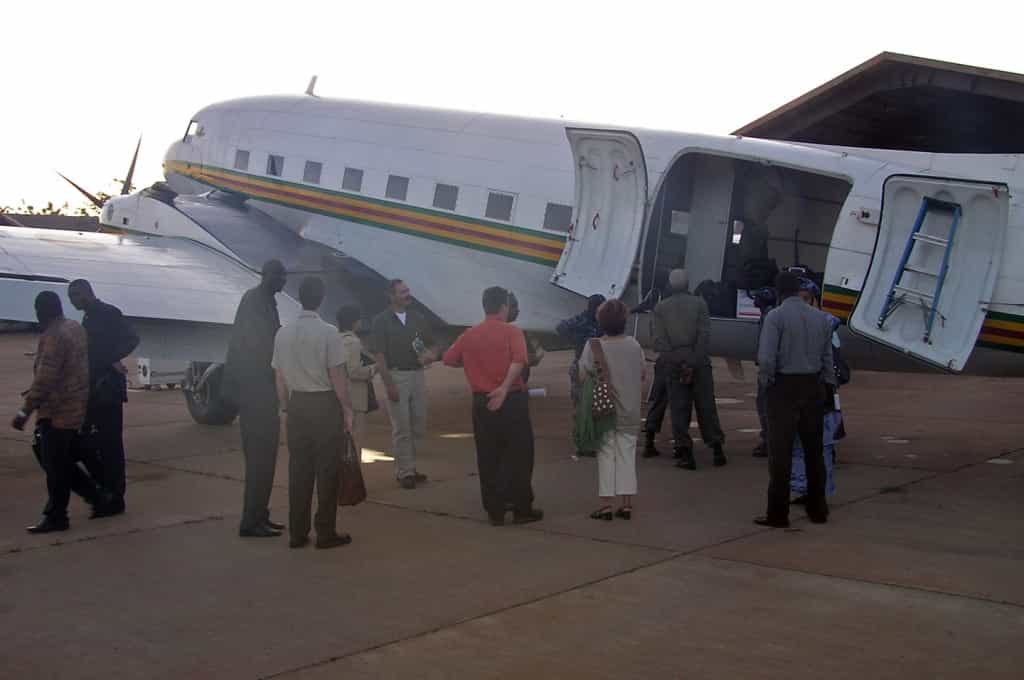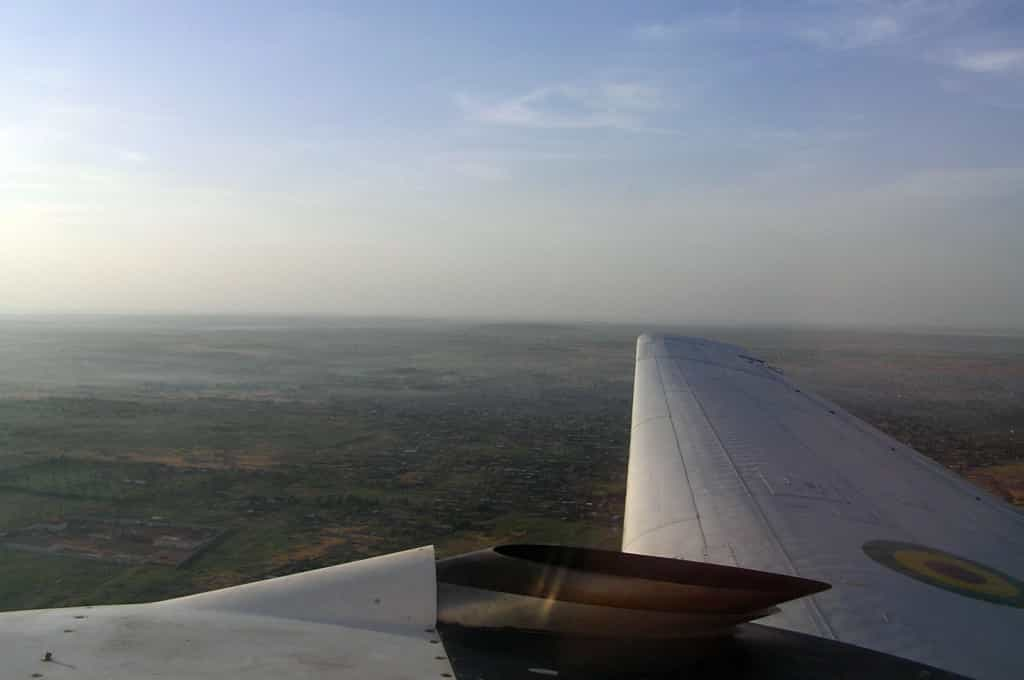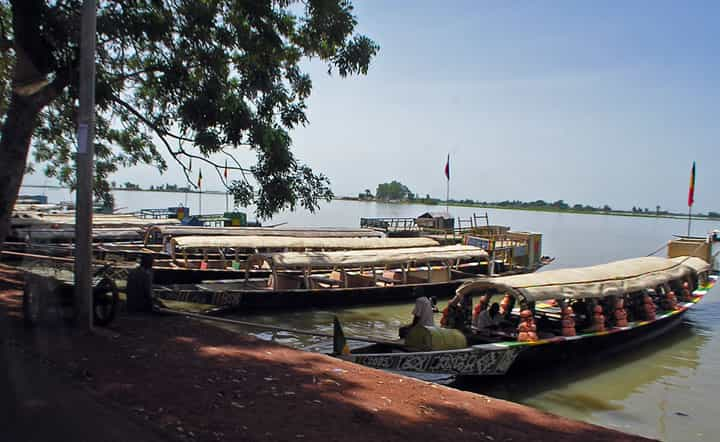In 2006, I went to Mali a couple of times, to help organize an event involving the Government of Canada. I don’t have a single picture of the capital, Bamako, as I was way too busy to do any tourism or take any pictures. However, the transportation logistics of going north to the town of Djenne were sufficiently slow to allow me to take a few shots along the way (with a little pocket camera, so excuse the terrible quality). Since few people travel to this now unstable country, I thought I would make it my second “blog prequel”, before I resume my travels next week.
The voyage north started with a flight on this retrofitted DC-3 operated by the Malian Air Force. I’m not an aviation expert, but I know that big wheels in the front, small wheel in the rear = really, really old plane.
Although I would love to take a ride in a fighter jet one day, I was glad this was not the day.
While I have since travelled to more isolated places, back in 2006 Northern Mali was the most “middle of nowhere” place I had ever been to.
Which is part of the reason why I didn’t really enjoy looking at the popped rivets at the front of the wing. Again: not an expert, but I have looked at hundreds of wings as a passenger and I don’t remember noticing popped and missing rivets!
Arriving at the airport of Mopti, a city of over 100,000, we spend a little bit of time in the Government lounge. This small area is the Presidential lounge of sorts, where a foreign head of delegation might hang out with his Malian host while the logistics get sorted out. I show it, absolutely not to mock its sparseness, but on the contrary to highlight it as a symbol of why Canada was very involved with Mali at the time. The burgeoning democracy was a model of improvement in governance for the region. In many other equally poor countries of Africa, if there was any chance a Head of State would ever sit there, it would have been plastered in gold, no matter what other program had to be cut.
Mopti is at the confluence of the Niger and Bani rivers. Since there are no bridges, locals cross the rivers in these ferries. They also use the rivers to wash clothes, and this resulted in one of the funniest sights I have ever seen travelling.
Mali being 99% Muslim, the women washing their clothes all wore a scarf on their heads, but since it was very hot and this is hard work, many were topless! And I didn’t paparazzi them in middle of the bush, this was downtown and I even saw one cross the street back to her house, through traffic, still topless! I call it “Islam Light”. This being a work trip in the company of Malian officials, you will have to excuse me for not taking any pictures!
To get to the famed town of Djenné, you head back south and take a vehicle ferry which is basically a pontoon with outboard engines. I was glad to know how to swim.
My terrible picture of the Grand Mosque of Djenné, a UNESCO World Heritage Site (along with the rest of the Old Town). It is by far the most impressive mud building I have ever seen. But the key word is mud, and I would lie if I said I was blown away. Non Muslims are not allowed inside, but this being a big official affair, an exception was made. Since a huge number of mud columns are required to keep up the roof, there is not a lot to see inside. Dark, cramped and unadorned. You infidels are not missing much.
As I talked – in French – to a Malian man, a young guy yelled something at us which I later learned meant something like: “Shut the hell up in the mosque”! Then, his confrontational tone turned to flight instinct, and he dashed out of there like the Road Runner, about a millisecond after realizing the man talking to me was the District Prefect. The Prefect yelled and cops ran after him, but I don’t know what happened next – and probably don’t want to know.
It was, however, fun to climb on the roof (again, not open to tourists). These little “boobs” can be opened, possibly to let light in, but honestly, I don’t remember. I do remember that every year (or few years) a big local chore is to resurface the mud walls, and this is how such structures can survive decades and centuries.
The market and Old Town, seen from the roof.
Mali is an extremely poor country and cities often have only open sewer systems. I snapped a few shots, but did it sparsely and discretely, as I wanted to avoid embarrassing my very professional, efficient and proud Malian counterpart.
But Mali remains today one of only a few countries where I witnessed first hand severe malnutrition. The falling hair on this little boy is the obvious sign of his terrible living conditions. But seeing him having to dig through the garbage of some of the poorest people in the world would have been enough of an indicator to measure the scope of his misery.
In the end, the Mali-Canadia event was a big success, as you can see by the crowds.
While Mali faces terrible difficulties today, in 2006 it was a very poor country, but one with a promising future of democratic progress and social development. While my few pictures and little stories tell of poverty and under-development, I witnessed incredible cultural performance in Bamako, Mopti and the village of Bandiagara. Unfortunately, documenting them was not what I was getting paid to do.
#Mali













